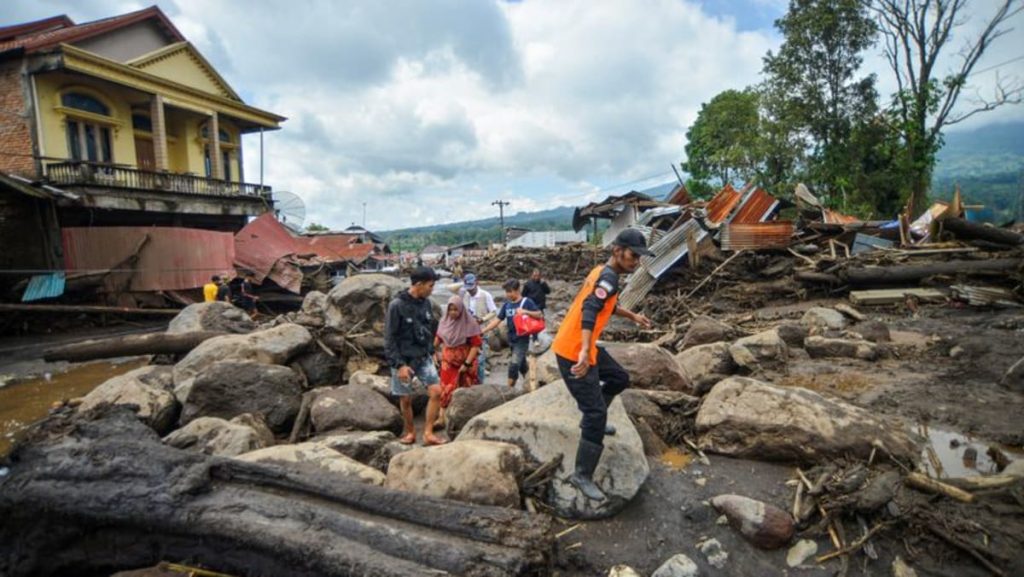Experts are warning that deaths from cold lava and flash floods on Indonesia’s Mount Marapi could have been avoided with better preparation against natural disasters. They suggest that residents living on the slopes of Sumatra’s most active volcano should have access to evacuation routes, as well as the implementation of weather modification techniques and improved land use policies at the provincial government level. These measures could help mitigate risks caused by overdevelopment and deforestation contributing to the disasters.
The recent floods on Mount Marapi were triggered by dozens of eruptions over the past five months, sweeping away tonnes of volcanic ash that had accumulated on the slopes. Surges of cold lava, water, and rock flowed down multiple sides of the volcano, which is known locally as the “Mountain of Fire.” The floods affected virtually all of the two dozen rivers with headwaters on the mountain, knocking down bridges, cutting off roads, and burying farmlands and residential areas under mud and debris.
By Wednesday morning, the death toll from the flash floods stood at 58 people with 35 more missing. The powerful floods had devastating impacts on the local community, causing widespread destruction and loss of life. Indonesia’s disaster agency chief later reported that the death toll had risen to 67, with some of the missing individuals being found. The urgency of improving disaster preparedness and mitigation measures in the region has become evident in the wake of this tragedy.
The need for residents to be better prepared for natural disasters on Mount Marapi is underscored by the avoidable deaths and destruction caused by the recent floods. Evacuation routes, weather modification techniques, and land use policies are all recommended as tools to minimize the risks of future disasters. Overdevelopment and deforestation have exacerbated the impact of volcanic eruptions and flooding in the area, highlighting the importance of sustainable land use practices and disaster management strategies.
The significant impact of the floods on Mount Marapi underscores the vulnerability of communities living in volcanic regions to natural disasters. The devastating consequences of the flash floods have prompted calls for urgent action to improve disaster preparedness in the area. With further eruptions and floods likely in the future, it is critical that measures are taken to protect the lives and livelihoods of those living on the slopes of Sumatra’s most active volcano.
The tragic loss of life resulting from the recent floods on Mount Marapi serves as a stark reminder of the need for proactive measures to mitigate the risks of natural disasters in the region. Improved disaster preparedness, including the establishment of evacuation routes and the implementation of weather modification techniques, can help protect communities living near the volcano. By addressing issues such as overdevelopment and deforestation through better land use policies, the risks of future disasters can be reduced, safeguarding lives and property in the face of volcanic activity and flooding.


